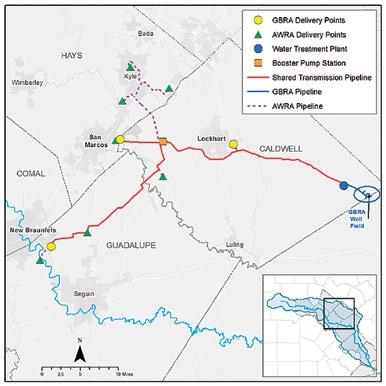GBRA RIVER RUN • SPRING 2020
GBRA Lab Key to Water Health
O
ver the course of a year, the GBRA water quality lab will analyze and report on more than 12,000 water and wastewater samples. Using the most current scientific analysis processes and equipment, the team of 10 environmental scientists ensure GBRA’s mission of supporting responsible watershed protection and stewardship is always improving. “You’ve heard the saying that ‘numbers don’t lie.’ Essentially, that is what our lab’s work is about. We generate the numbers from water and wastewater quality analyses that indicate the overall quality of the water in the Guadalupe and Blanco rivers watersheds,” stated Kylie Gudgell, GBRA regional lab director. “We employ testing techniques that have been used for decades and some that are relatively new science. We are constantly looking for the best ways to gain the best data from our water and wastewater quality sampling because, in the end, those numbers are the keys to letting the public know about the overall health of the environment they live in.”
Gudgell’s focus on science gives you an indicator that water quality labs like GBRA’s are heavily regulated and monitored. The GBRA lab is a certified drinking water laboratory, which has adopted the exacting standards of the National Environmental Laboratory Accreditation Program (NELAP). About 10 years ago, the Texas Commission on Environmental Quality (TCEQ), the State’s environmental regulatory agency, adopted a position that only NELAP-certified labs would be able to submit official data to the State for permitting purposes. With GBRA operating numerous water and wastewater plants throughout its service area, the lab stays busy each month helping the plant operators ensure their facilities meet all permit requirements. The lab analyzes the water samples, works with the plant operators on any follow up testing that might be required, and then reports results to TCEQ through its web portal.
A laboratory technician testing for Alkalinity in water samples.
12







